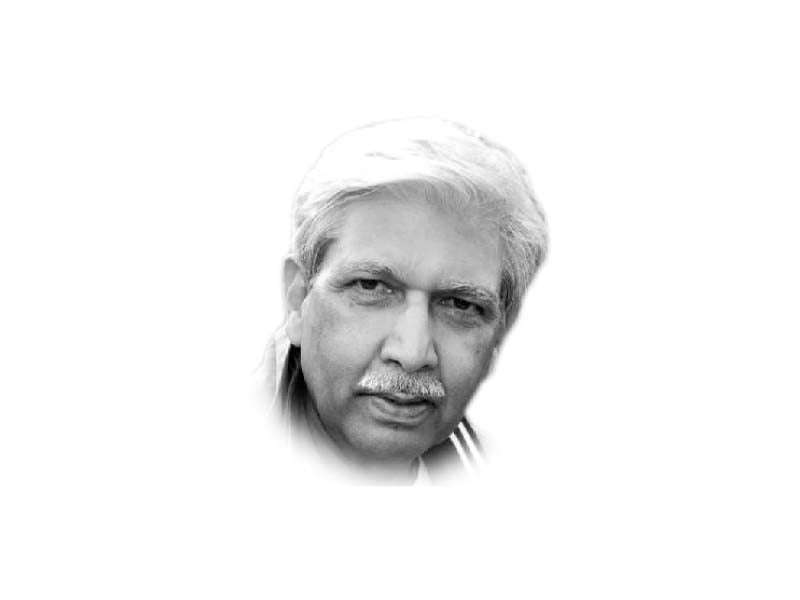
Nine-eleven brought another war to Afghanistan — its underlying reasons are plenty from the most mundane to the profound — and subjected Pakistan to another set of challenges in perpetual counterterror operations beginning 2004. Operations Rah-e-Raast, Zarb-e-Azb and Radd-ul-Fasad — 2008 onwards in continuity — defined Pakistan’s war against its own set of contending terror groups inspired by the presence of Afghan Taliban and Al Qaeda in their midst. What began as a surging sentiment of militant Islam is now manifested in the likes of Daesh who continue to cash in on a sense of perceived excesses against the Muslims world over.
The Americans began ‘Operation Enduring Freedom’ in 2001. Pakistan, willy-nilly, became a cohort to this US project under UNSC Resolutions 1267 and 1373 which made it incumbent upon all signatories of the UN Charter to enable, facilitate and assist in this US/NATO ‘Global War on Terror’. Pakistan under General Musharraf, who had overturned Nawaz Sharif’s democratic government in 1999, found this an opportunity to re-find relevance with the US and became America’s ‘most aligned Non-NATO ally’. He had been struggling for a year to find legitimacy among the international community after his military coup. Although a lot was made of denying India the chance to get cozy with the US by stepping in instead to offer support to the American mission it remained a patently political consideration. It had a lot to do with getting closer to the US and gaining as much from that relationship including international clout. Rest was only convenient justification for domestic consumption.
The PAF was required to provide bases — three, in Balochistan, not under PAF use — airspace and an ALOC (Air Lines of Communication) for logistic build-up and support. By 2003 the Americans were fully into Afghanistan and their need for these bases became limited except for Shamsi wherefrom they still operated their drones into Afghanistan and in restricted spaces over Pakistan’s tribal regions against Al Qaeda and Taliban targets. Pakistan’s and PAF’s role remained restricted to airspace clearance and coordination. A small group of officers was dedicated solely to coordinate with the Americans on these requirements. The allocated airspace over Pakistan for American Drones was restricted to the tribal regions in the west. Similar set-ups were also created under OEF for coordination with Afghan and American land forces in the operational areas to coordinate and manage border missions and operations which were undertaken from the Afghan side of the border. These did not always work as efficaciously as intended as evinced in Abottabad and Salala.
In early 2004, Army approached the PAF to provide air support in an operation that had gone awry in the Jandola area. This was the first time since ground operations began that the army had sought direct assistance. Their requirement was met through resources available in the area strafing intending targets for the army. Army’s concept of air support was predicated on previous wars which stood dated with induction of newer technologies and employment concepts. The PAF offered the army precision engagement and targeting with certainty of results against identified targets as long as those carried fidelity in intelligence and operational priority. Merely blowing holes in the air in the name of show-of-force was neither efficacious nor viable.
Both sides quickly graduated to the newer dynamics of air warfare and established mechanisms that enabled greater clarity in identification, prioritisation and mission coordination. Intelligence, planning and execution became the lynchpin which enabled tactical to operational returns ultimately leading to strategic gains as the terror groups began receding into far reaches. Such effective success only became possible with persistent application in the years ahead. The mechanisms of coordinated force application were built on in subsequent years as Pakistan’s military system became intensely involved with the war on terror, but within Pakistan against those groups that threatened the state of Pakistan. PAF operations continued in the greater Jandola-Shakai-Sararogha areas. The US was fighting its own battles in Afghanistan.
The army continued to deploy more units in the region to stem the expansion of the militants beyond their original areas of refuge but surprisingly did not call on the air force further to assist. Later it was acknowledged “that keeping the air force out… between 2004-07 was a mistake”. When things headed badly south in Swat in 2008 and the militants were found to be far strongly entrenched in their logistics and tactical positions the air force was once again asked to eliminate those strongholds. Thereon the army progressed smoothly to take back complete control of the valley which lay only 100 km from Islamabad. PAF and the army once again effectively coordinated to first vacate South Waziristan and then North Waziristan in 2014 during Zarb-e-Azb.
The learning curve of Pakistan’s military system was steep when they first had to encounter and cleanse the areas of what had turned malignant against the state. Both, the army and the air force learned fast. Precision weapons from the air enabled certainty which was a valuable asset. The air complement was used for such application perhaps for the first time to such beneficial gain in an irregular war. A combination of both regular and irregular warfare enabled the successes that Pakistan achieved in clearing its tribal belt and reasserting its writ. Parallel operations in Afghanistan by a similar and more capable US/NATO military was neither persistent in application nor defined in its operational purpose to achieve clearly defined goals. Their objectives were more US driven than Afghanistan driven and this cleavage showed wide gaps in what could have and what was achieved by them as the war ended after twenty years.
The PAF improvised and created in the meanwhile. If we did not have persistent presence with Drones to surveil and attack we modified our existing platforms to that effect and had ready forces handy to respond in very quick time since the targets in such a war are mostly fleeting. It shall go to the credit of the engineers and the planners of the PAF that they relied on indigenous thought and resource to innovate and employ the most optimal means in fulfillment of what became their joint mission with the nation’s army. It took a lot from these young men and women who enabled Pakistan to come out on top. Our challenges remain even if a phase is over and it shall take a similar level of commitment in development and innovation in employment which will help PAF carry the day in future phases of this or another war. PAF’s foundations and doctrinal traditions is strong. We mustn’t ever lose those ideals. India remained as much a story in parallel as we wrote another in the west against terror. (Concluded)
Published in The Express Tribune, September 17th, 2021.
Like Opinion & Editorial on Facebook, follow @ETOpEd on Twitter to receive all updates on all our daily pieces.

1724760612-0/Untitled-design-(12)1724760612-0-405x300.webp)











COMMENTS
Comments are moderated and generally will be posted if they are on-topic and not abusive.
For more information, please see our Comments FAQ